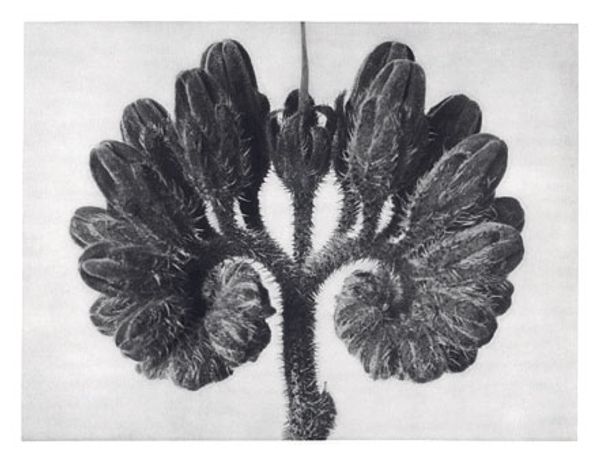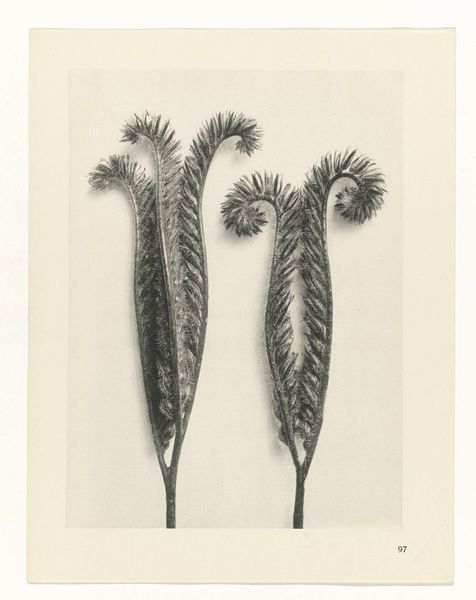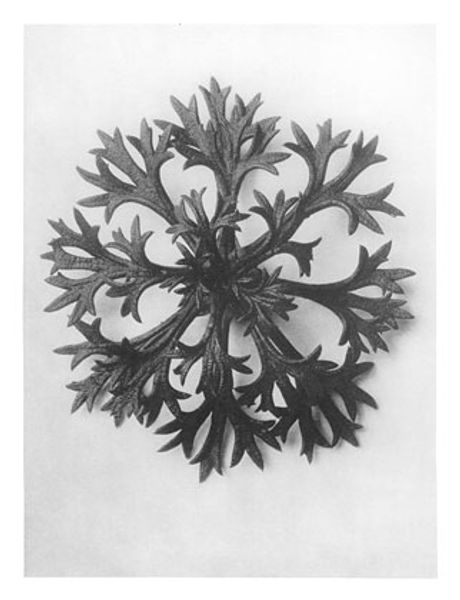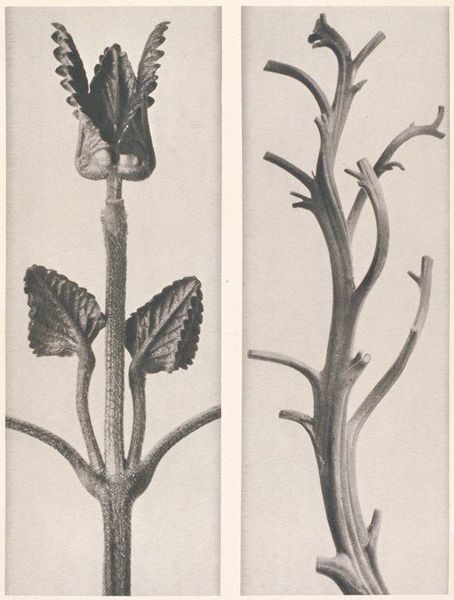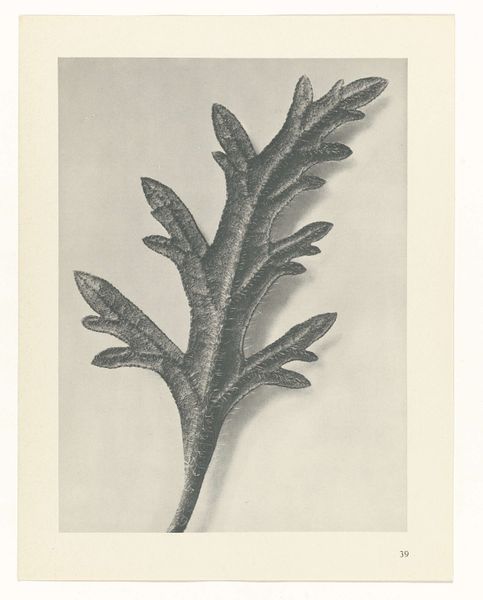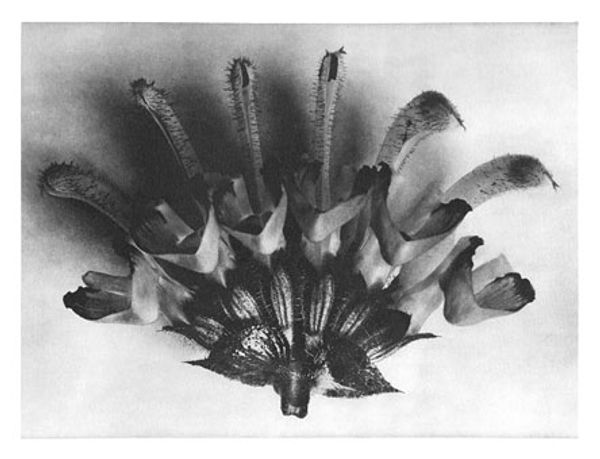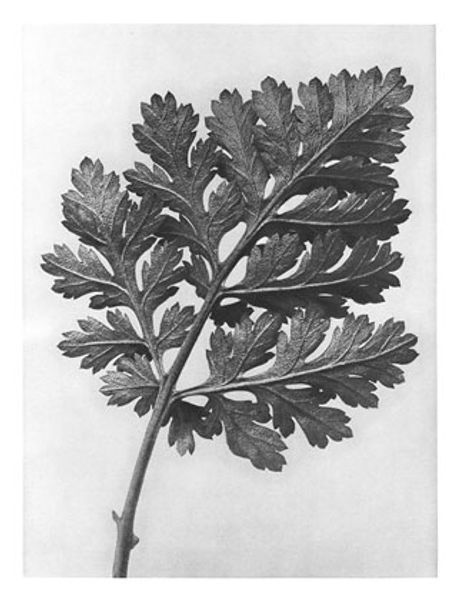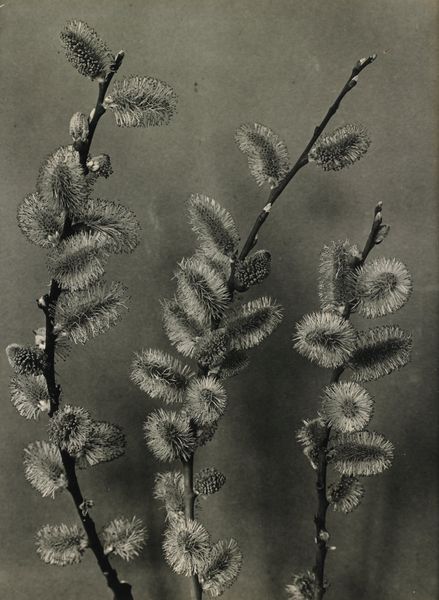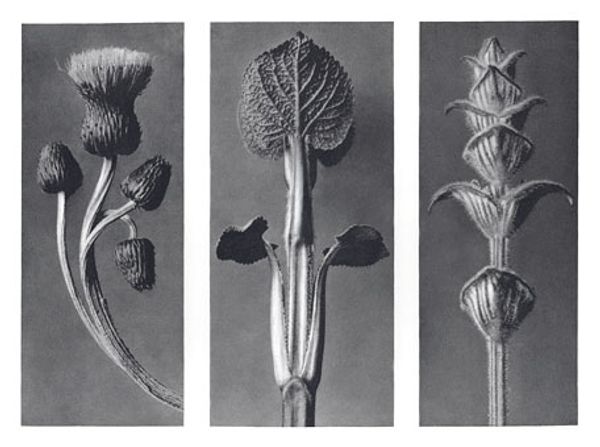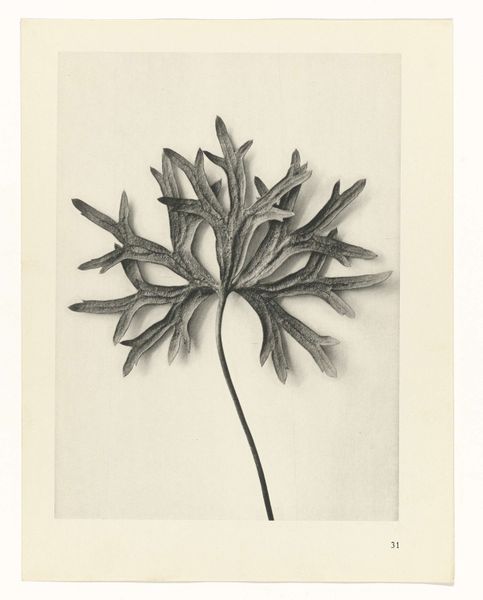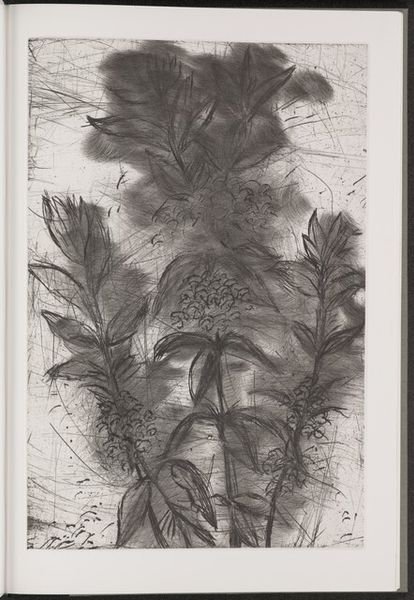
print, photography
#
vegetal
#
negative space
# print
#
natural composition
#
photography
#
geometric
#
naturalism
#
modernism
Copyright: Public domain
Curator: I’m immediately struck by how austere this image feels; it’s so graphically compelling. Editor: Indeed. Before us is Karl Blossfeldt's "Art Forms in Nature 89," a 1928 print from his renowned series. What intrigues me is Blossfeldt's deliberate focus; these weren't mere snapshots, but meticulous studies aimed to reveal the inherent geometry within plants. Curator: I can see that. It looks like the work of a careful craftsman almost like it could be mass-produced to build a better world for everybody. The stark monochrome emphasizes form over color, presenting nature as a blueprint or a structure rather than some pretty decoration. Editor: Precisely. His choice of photography as a medium was revolutionary too. It was seen as scientific, of course, not necessarily "art," but Blossfeldt elevates it through scale and presentation. He wasn't just documenting, he was revealing unseen structural principles—almost a manifesto for function informing form. What material or process could have had the biggest impact? Curator: I’m betting it’s the stark, unforgiving clarity he gets with gelatin silver print. Look at how those negative spaces are constructed as they support the subject of the piece; the medium enables a democratic view and provides the truth, yet, we also acknowledge his manipulation. He's guiding our eye and he makes the labor of photography apparent, stripping away romantic notions of nature. Editor: You’ve captured my thinking precisely, and that interplay is vital to understanding the lasting influence of these works in education and architecture. How could we reconsider the aesthetic possibilities of photography without necessarily using expensive supplies? Curator: Exactly. The image's simplicity challenges established categories while it celebrates natural engineering and suggests endless avenues of experimentation by artists with different material approaches, too. That’s something to aspire to in any work of art. Editor: Very true. A fitting close, demonstrating that from meticulous observation to innovative technique, this singular work offers rich ground for exploration.
Comments
No comments
Be the first to comment and join the conversation on the ultimate creative platform.
